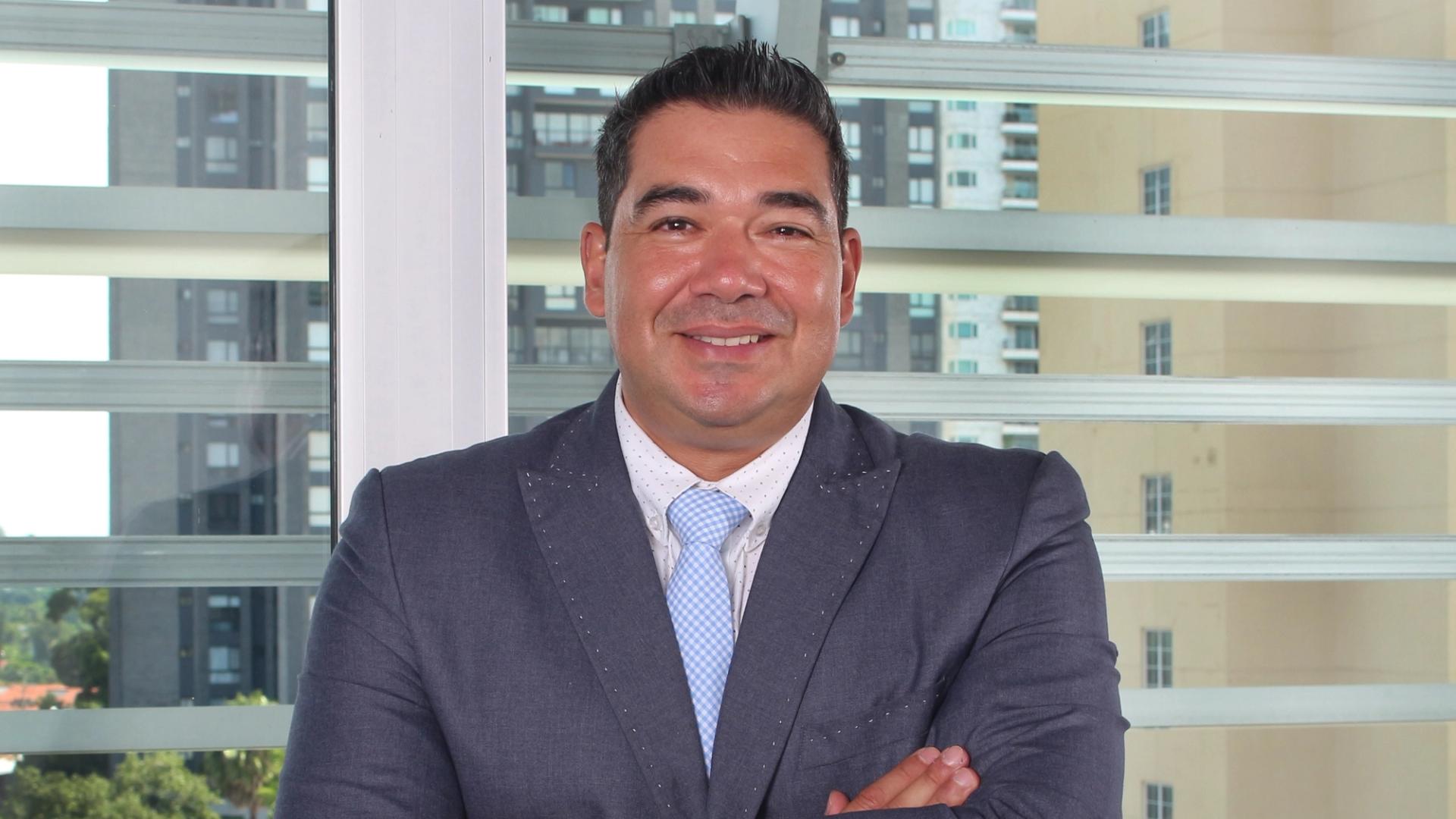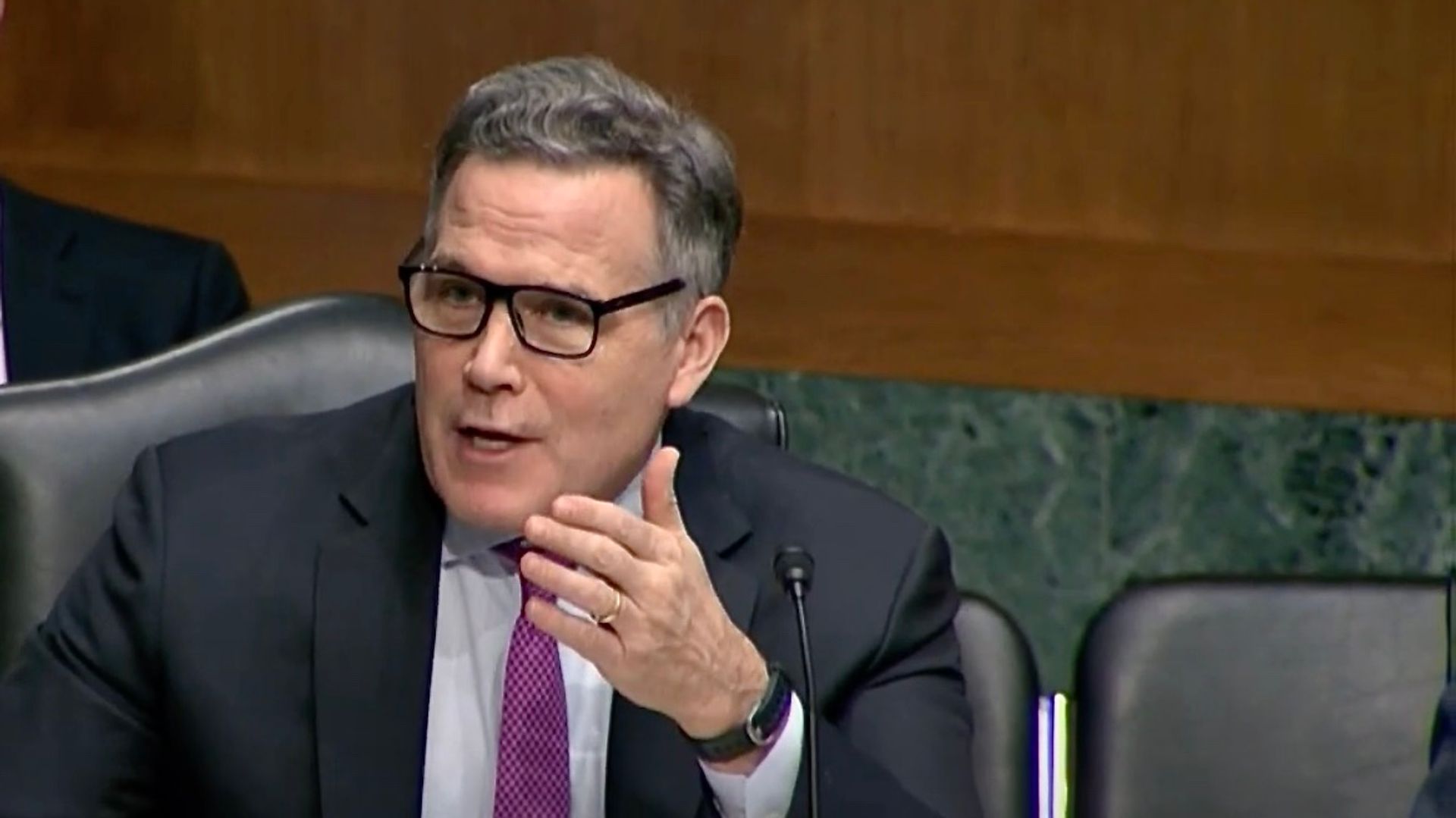Uncategorized
Will Canada Lead on Digital Assets?

With Canada’s federal election less than one week away, Canadians are closely watching how political leaders intend to address digital assets. Millions of Canadians hold, use, or work in crypto, making it a growing focal point for economic growth and innovation. This politically prominent and growing community is shaping conversations about the future of finance, with voters signaling cautious openness, not to ban or ignore crypto, but to responsibly integrate it into Canada’s financial system with clear protections, accountability, and forward-looking policy.
Dean Skurka is a speaker at Consensus 2025, in Toronto May 15, appearing with Kevin O’Leary on Mainstage.
Canada’s leadership in digital assets isn’t theoretical. It has evolved through first-of-its-kind milestones, homegrown innovation, and meaningful regulatory advancements, including:
- Canada installed the world’s first Bitcoin ATM in Toronto in 2013;
- Ethereum, co-founded by Canadian Vitalik Buterin, began in Canada in 2015;
- Vancouver’s Dapper Labs introduced groundbreaking NFT platforms like NBA Top Shot, which launched in 2020;
- The Ontario Securities Commission and Canadian Securities Administration introduced a novel regulatory framework for crypto trading platforms in 2021; and
- Regulatory initiatives such as Alberta’s fintech sandbox and blockchain innovation hubs actively support industry growth, which launched around 2022.
Voter Momentum and Public Sentiment
The pro-crypto voter base is large, diverse, informed, and engaged. According to a survey bu Nanos Research for the Canadian Web3 Council:
- Younger Canadians and those with direct investment experience tend to view crypto favourably, indicating a generational and experiential shift in sentiment.
- 60% of Canadians surveyed support the federal government working with industry experts to develop cryptocurrency regulations and protect public interest. Only about one in five surveyed were opposed.
- 48% of Canadians say the government should implement a strategy for a “more accessible, inclusive, and effective financial ecosystem” that includes digital assets.
This engaged voter base, the majority being under 50, represents a significant political force. The election and subsequent administration offer policymakers a chance to support voters’ eagerness for clarity around Canada’s digital future.
In 2022, the (pro-crypto) Conservative leader Pierre Poilievre made headlines for advocating financial freedom through Bitcoin and decentralized finance, calling for less control from politicians and bankers and more power in the hands of individuals. He said he wanted to make Canada “the blockchain capital of the world,” allowing people to “opt out” of inflation by using cryptocurrencies like Bitcoin.
Read more: Nik De — Previewing the Canadian Election’s Crypto Angle
By contrast, former Bank of Canada Governor Mark Carney, representing the Liberal Party, while supportive of digital innovation, remains skeptical of the idea that cryptocurrencies like stablecoins will fundamentally reshape the monetary system. He has argued that central bank digital currencies (CBDCs) would be a safer, more stable foundation for digital money.
«Stablecoins are ultimately only an appendage to the conventional monetary system and not a game changer. CBDCs would reduce the risks of digital money and form the foundation of a more stable, programmable financial future,” he wrote in 2021.
Meanwhile, NDP leader Jagmeet Singh has openly criticized crypto’s volatility, citing the financial losses suffered by Canadians who bought into digital assets as a hedge against inflation.
“We have a leader of the opposition who thinks he can magically opt out of inflation by buying cryptocurrency, which ended up tanking and hurting people,” he said in 2022.
The successful candidate from this upcoming election has a chance to translate these varied views into coherent platform frameworks and enhance Canada’s position as a forward-thinking and tech-driven economy.
Global Signals: Local Opportunity
The European Union has implemented the Markets in Crypto-Assets (MiCA) framework, offering clear crypto regulations.
The U.S. is playing catchup following the election of Donald Trump last November. The U.S. House Financial Services Committee has advanced the «Stable Act of 2025,» a significant step toward establishing a federal regulatory framework for stablecoins. And bipartisan efforts like the Virtual Currency Tax Fairness Act propose to exempt small crypto transactions under $200 from capital gains taxes. Congressional leaders are now working on a comprehensive “market structure” bill for crypto and regulators are open-minded about working with companies to adapt existing laws to modern needs.
Canada is well-positioned to do the same. With the right policies, we can continue to attract leading talent, keep homegrown companies here, and strengthen our global voice in Web3.
The choice is ours.
Why Policy Clarity Matters
Clarity on digital asset policy will affect how Canadians save, invest, and transact; whether new jobs and industries are built here or abroad; and whether our country will lead or follow in a rapidly emerging digital sector.
Digital assets offer tangible benefits like faster, cheaper remittances for newcomers supporting families overseas, more accessible financial tools for underserved communities, and diversified investment alternatives in times of economic uncertainty. Beyond personal finance, blockchain technology has real potential to modernize Canada’s financial infrastructure, enhance anti-fraud efforts, and improve transparency in sectors like supply chain management and government services.
The Canadian Web3 Council has called for integrating blockchain into Canada’s broader innovation strategy, urging federal support for talent development, funding, and the creation of a national blockchain strategy. They advocate for clear frameworks around decentralized finance (DeFi), stablecoin regulation, and for Canada to take a leadership role in global digital asset policy conversations.
The Role of Industry & Community
The responsibility of highlighting crypto’s importance largely falls on the industry itself. Initiatives like Stand with Crypto Canada (a national advocacy campaign supported by WonderFi and nine other major companies) are actively educating voters and policymakers about the economic benefits of clear crypto regulation.
Similarly, Blockchain North’s Voices for Canadian Crypto campaign, featuring prominent thought leaders, is helping unify industry voices, emphasizing the need for proactive policy conversations with leaders.
We have talent. We have the infrastructure. And we have momentum.
Now, we need leaders who see crypto not as a passing trend, but as a powerful opportunity to fuel Canada’s economy and empower a new generation of builders, investors, and innovators.
The digital economy is here. The only question is: will Canada lead?
Uncategorized
Global Tokenized Real Estate Market Could Explode to $4T by 2035, Deloitte Forecasts

Real estate tokenization—once a niche experiment—may soon become a core pillar of how property is financed, owned and traded, according to a Thursday report by Deloitte Center for Financial Services.
The market of tokenized real estate could reach $4 trillion by 2035, growing at a compound annual rate of 27% from the current size of under $300 billion, the firm forecasted.

Tokenization of real-world assets (RWA) is a red-hot sector at the intersection of crypto tech and traditional finance. It consists of creating digital versions of assets like bonds, funds and real estate, that represent ownerships on blockchain rails.
The process offers operational efficiencies, cheaper and faster settlements and broader investor access.
For the real estate sector, tokenization’s appeal lies in its ability to automate and simplify complex financial agreements, the report explained, such as launching a real estate fund on-chain with coded rules handling ownership transfers and capital flows. An example for this is Kin Capital’s $100 million real estate debt fund tokenization platform Chintai with trust-deed-based lending, Deloitte noted.
The report outlines a three-pronged evolution of tokenized property: private real estate funds, securitized loan ownership, and under-construction or undeveloped land projects. Of these, tokenized debt securities are expected to dominate, hitting $2.39 trillion in value by 2035, based on the report’s forecast. Private funds could contribute around $1 trillion, while land development assets may account for some $500 billion.

Despite the advantages, challenges remain, the report noted, especially around regulation, asset custody, cybersecurity and default scenarios.
Read more: Tokenized Funds’ Rapid Growth Comes With Red Flags: Moody’s
Uncategorized
El Salvador’s Top Crypto Regulator Meets With U.S. SEC: ‘It Was Very Refreshing’

El Salvador’s Comisión Nacional de Activos Digitales (CNAD), the agency in charge of regulating digital assets in the Central American nation, is seeking to establish a cross-border regulatory sandbox with the U.S. Securities and Exchange Commission (SEC).
“We want to create international collaboration,” Juan Carlos Reyes, president of the CNAD, told CoinDesk in an interview. “Our biggest message is that digital assets don’t have any geographical barriers. Collaboration with regulators should not have international barriers either.”
El Salvador is in a unique situation in that it did not boast of strong financial institutions, or even of an existing ecosystem of developers, when President Nayib Bukele made bitcoin legal tender in 2021. That means the CNAD was able to start with a blank slate when it introduced a regulatory framework tailored to crypto.
Almost two years later after Reyes took over the agency, El Salvador’s advanced regulatory framework has incentivized crypto giants such as Tether, Bitfinex and Binance to open shop in the country.
The idea, Reyes said, is for the U.S. SEC to now use El Salvador as a live, real-world case study to evaluate streamlined regulatory approaches for digital assets — in other words, for the SEC to learn from El Salvador’s experience as it revamps its own regulatory framework in a post-Gensler world.
The pilot program proposed by the CNAD involves different scenarios: a U.S.-licensed traditional finance broker obtaining a digital asset license under CNAD regulations, and the development of two small-scale tokenization offerings facilitated by a CNAD-licensed tokenization company. Each scenario would be capped at $10,000.
These initiatives would support some of the objectives laid out by SEC Commissioner Hester Peirce in February, when she wrote that the SEC Crypto Task Force, which she now leads, would take a very different approach towards crypto regulation from here on out.
“CNAD really looked at [Pierce’s document] with a critical eye as to how we can help,” Erica Perkin, owner of The Perkin Law Firm and a member of CNAD’s advisory group, told CoinDesk. “We’re here. There’s data [the SEC] might want to collect. It’s difficult to collect in the U.S. … We’ve built a framework that’s nimble enough to work on the exact issues that the SEC is looking at, and we’re here to help and collect information on how we can best do that.”
The CNAD met with the SEC’s Crypto Task Force on April 22 to discuss the initiative. The meeting was constructive, according to Reyes and Perkin. “They asked good questions,” Perkin said. “They’re in an information-gathering phase. They were engaged and open to discussion.”
Reyes has already signed regulatory cooperation agreements with countries such as Argentina and Paraguay. In his view, the SEC seems to be ahead of the curve when it comes to understanding the regulatory needs of digital assets, whereas regulators in other jurisdictions have tended to see crypto regulation from a traditional finance perspective.
“The quality of people that make up the SEC Crypto Task Force is quite impressive. They get it. They understand the technology,” Reyes said. “We were able to have discussions that were on point about what’s needed in order to regulate the technology… It was very refreshing.”
Uncategorized
Senator and Ex-Bridgewater CEO McCormick Invests More in Bitcoin as Bill in Works

U.S. Senator Dave McCormick, the former chief executive of massive hedge fund Bridgewater Associates, is putting his own cash into bitcoin (BTC) as the committee he’s on is at the tip of the spear for a legislative effort to regulate the digital assets industry.
McCormick has made repeated recent investments in the Bitwise Bitcoin ETF worth hundreds of thousands of dollars, according to disclosures this week. Because of the ranges used in such lawmaker disclosures, the latest amounts invested last month can only be said to be between $310,000 and $700,000.
The new investment follows McCormick’s disclosure of as much as $450,000 in the Bitwise ETF in February, potentially bringing his total investment closer to a million. His investments represent the bulk of bitcoin investing in Congress this year. Representative Marjorie Taylor Greene, a Georgia Republican, invested a much smaller amount, favoring BlackRock’s iShares Bitcoin Trust (IBIT).
The Republican senator from Pennsylvania, who has held a series of high-profile government posts throughout his career, is new to the Senate and was put on the Senate Banking’s Committee’s subcommittee that deals with digital assets. That’s the group of lawmakers likely closest to the coming action on crypto legislation that’s expected to move this year.
As a Senate candidate last year, the former hedge fund exec argued America needed to lead on crypto. He said during the subcommittee’s first digital assets hearing in February, «This Congress must work alongside President Trump to pass bipartisan digital asset legislation that will guide the future of innovation and secure a robust economic future for the U.S.»
While his bitcoin stake is outpacing other lawmakers, he’s been putting the bulk of his investments in municipal securities in recent months, the disclosures show.
Read More: Congress’ Most Prolific Crypto Trader Is a Georgia Trucking Operator
-

 Fashion6 месяцев ago
Fashion6 месяцев agoThese \’90s fashion trends are making a comeback in 2017
-

 Entertainment6 месяцев ago
Entertainment6 месяцев agoThe final 6 \’Game of Thrones\’ episodes might feel like a full season
-

 Fashion6 месяцев ago
Fashion6 месяцев agoAccording to Dior Couture, this taboo fashion accessory is back
-

 Entertainment6 месяцев ago
Entertainment6 месяцев agoThe old and New Edition cast comes together to perform
-

 Business6 месяцев ago
Business6 месяцев agoUber and Lyft are finally available in all of New York State
-

 Sports6 месяцев ago
Sports6 месяцев agoPhillies\’ Aaron Altherr makes mind-boggling barehanded play
-

 Entertainment6 месяцев ago
Entertainment6 месяцев agoDisney\’s live-action Aladdin finally finds its stars
-

 Sports6 месяцев ago
Sports6 месяцев agoSteph Curry finally got the contract he deserves from the Warriors





